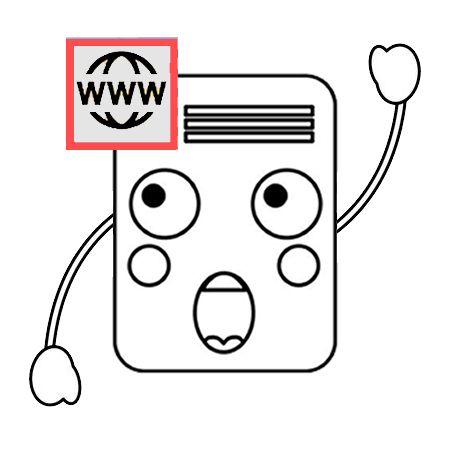Double Negative Worksheets
Negative words make things mean the opposite. For example: Mr. Morton is not boring. In this sentence the negative word is not. Without the word not, the sentence has exactly the opposite meaning (and is entirely untrue :D). There are lots of negative words in the English language such as not, never, no, nowhere, and nothing. Negative words are an essential feature of our language and there is nothing wrong with using them.
The problem with negative words comes into play when speakers and writers start stacking them. Using more than one negative word in a phrase or clause can be very confusing for readers and listeners. The reason for this is that the negative words cancel each other. For example:
This sentence is hard to understand (and completely false :D). The negative words cancel one another. Readers and listeners have to figure out that that confusing sentence means the same as this simple one: Mr. Morton is always boring. This brings me to my next point. If you are stacking negative words and using more than one in a phrase or clause, you are doing it wrong. There is an easier way to say it. It is the job of the speaker or writer to communicate clearly. Using double negatives makes it hard to do this job.
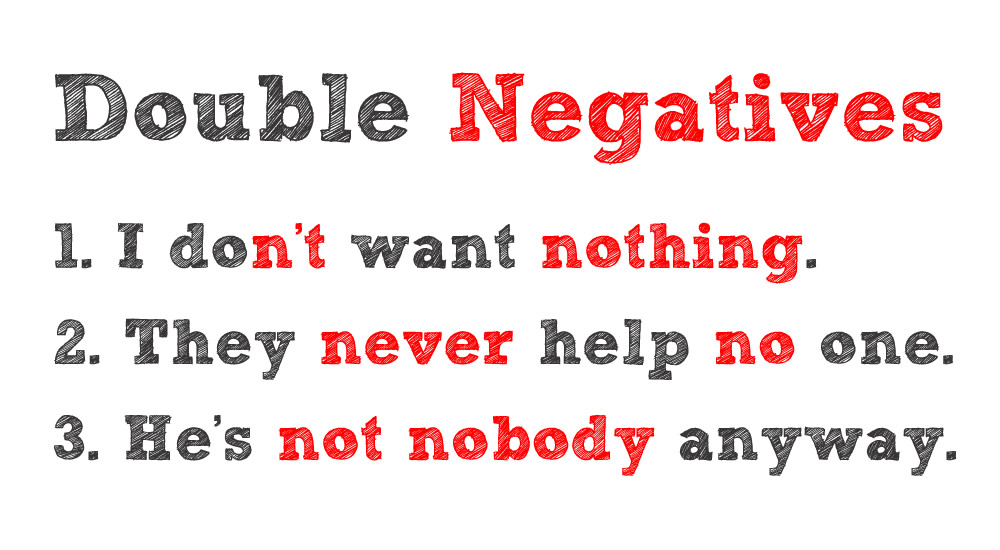
This page contains a collection of resources to help students recognize and avoid using double negatives. The worksheets on double negatives can be printed, edited, or completed online and are free for use in homes and classrooms. I've also created a PowerPoint lesson on the topic of double negatives and recorded an instructional video. You are welcome to use these to achieve your learning goals as well. Best wishes!

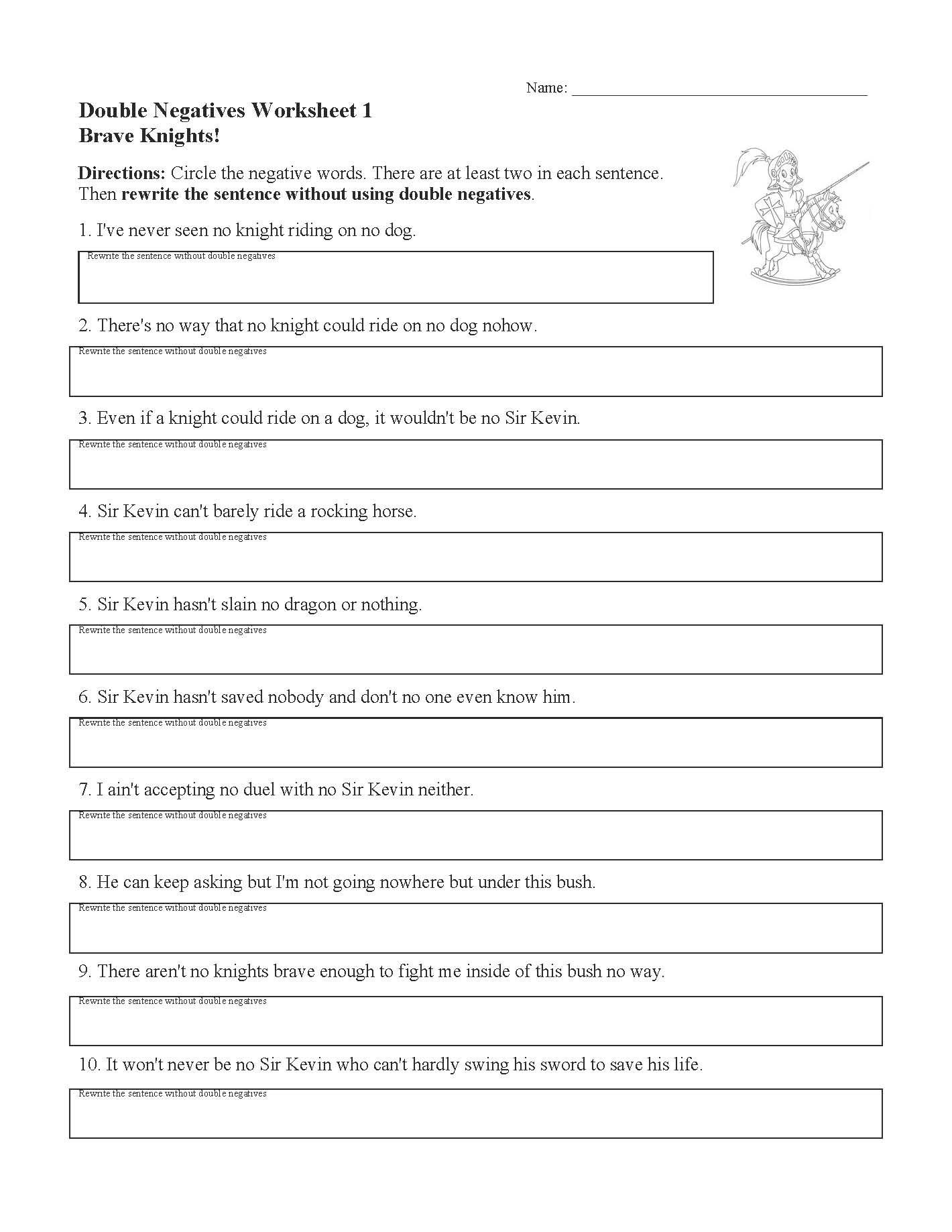
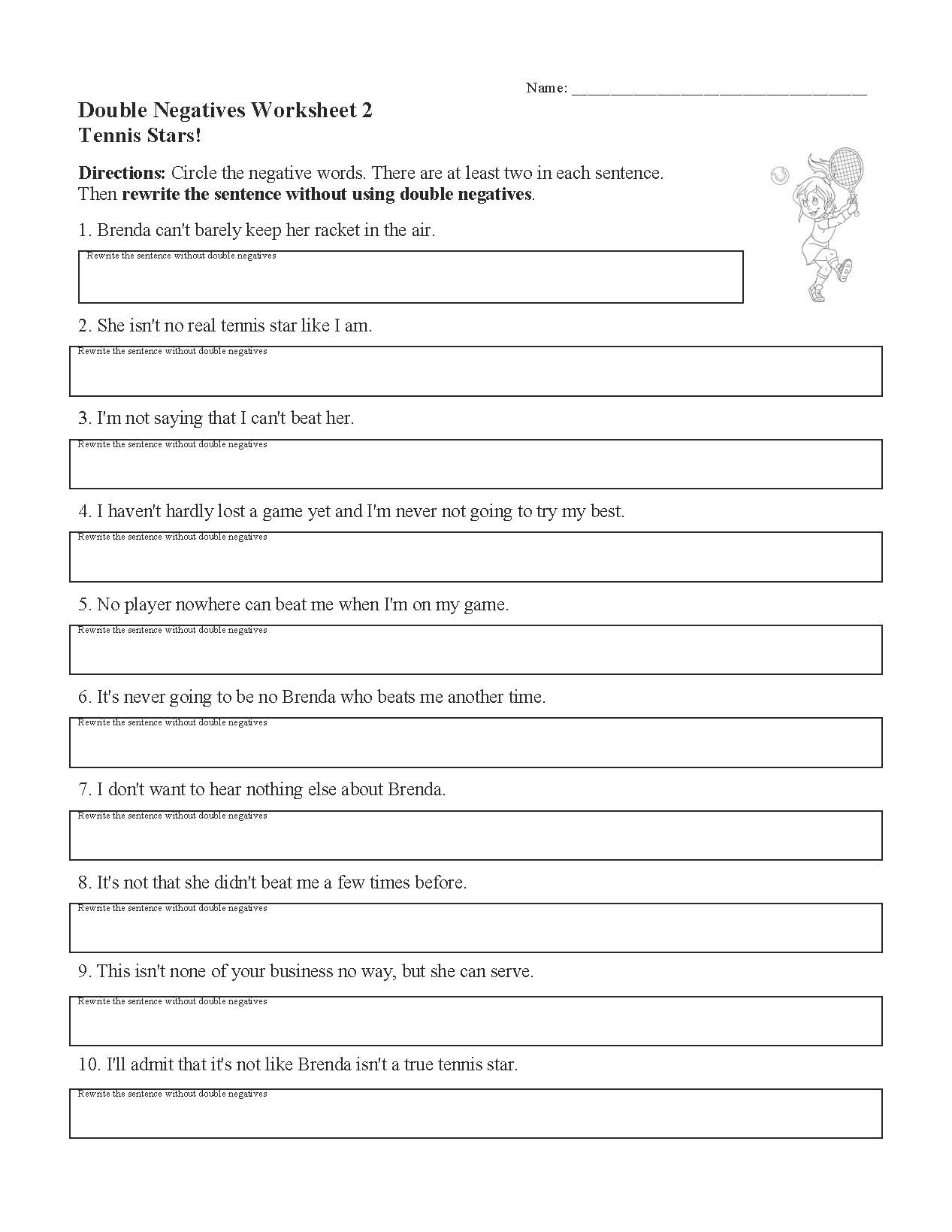
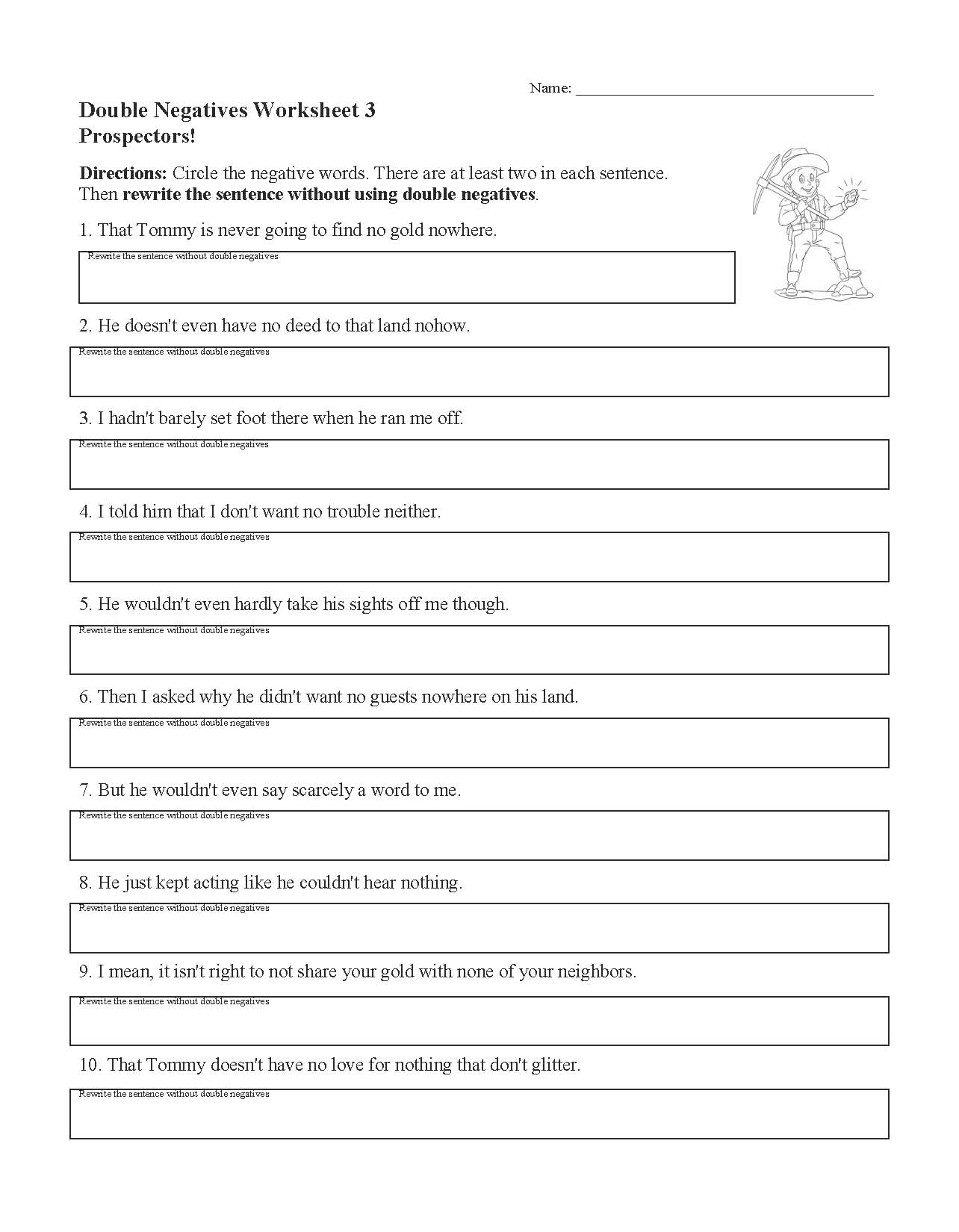
Search here.
- Author's Purpose Worksheets
- Characterization Worksheets
- Conflict Worksheets
- Fact and Opinion Worksheets
- Figurative Language Activities
- Figurative Language Poems with Questions
- Genre Activities
- Irony Worksheets
- Making Predictions
- Mood Worksheets
- Nonfiction Passages and Functional Texts
- Parts of Speech Worksheets
- Poetic Devices
- Point of View Worksheets
- School Project Ideas
- Setting Worksheets
- Simile and Metaphor Worksheets
- Story Structure Worksheets
- Text Structure Worksheets
- Theme Worksheets
- Tone Worksheets
- ALL PAGES AND WORKSHEETS






